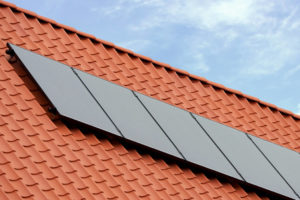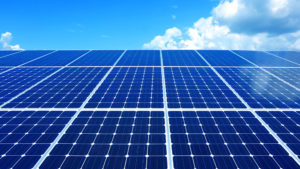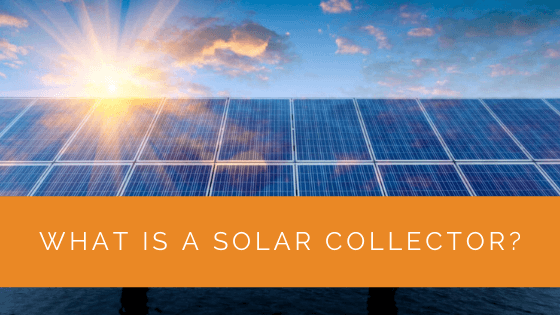The power of the sun is free, clean and readily available. Today, an increasing variety of devices and systems apply solar energy to make our lives a little easier. Here is what you need to know about solar collectors, what they are and how they work.
Contents
Key Takeaways
- A solar collector is a device that concentrates and collects solar radiation to produce heat, commonly used for heating water and generating power in thermal solar energy plants.
- There are various types of solar collectors, including flat plate collectors, evacuated tube collectors, line focus collectors (parabolic troughs), and point focus collectors, each with distinct applications and efficiency.
- Unlike solar panels that convert sunlight directly into electricity, solar collectors capture solar energy as heat, making them suitable for applications such as water heating, solar-assisted cooling, pool heating, and supplemental heating.
What is a Solar Collector?
A solar collector is a device that concentrates and collects solar radiation. Typically, they are used as a source of heating, especially as an alternative form of heating water for domestic use. But they are also found in larger arrays at work in thermal solar energy power plants.
How Do Solar Collectors Work?
 There are many different types of solar collectors, but they all work in basically the same way. The collector is installed somewhere it can receive plenty of sunlight, like the roof of the home.
There are many different types of solar collectors, but they all work in basically the same way. The collector is installed somewhere it can receive plenty of sunlight, like the roof of the home.
Here the sunlight is collected on a dark black material that covers pipes below that carry the water to be heated. As the black material absorbs the heat of the sun, it gets very hot and transfers this heat to the water pipes below.
The concept is very simple and can be used in various ways to warm water or even hat to considerably high temperatures compared to the ambient temperature.
Different Types of Solar Collectors
Flat Plate Collectors
This type of solar collector consists of a simple compartment, like a box with clear glazing on the top and a dark black absorber plate on the bottom.
Solar radiation collected on the absorber plates is transferred as heat energy to the water or air passing through the compartment. The glazing on the top is sometimes treated with a reflective coating that increases the energy efficiency within the compartment.
Materials are always an important part of an efficient collector, and these boxes are typically made of copper.
Evacuated Tube Collectors
Because a vacuum is an excellent insulator, evacuated tubes allow for improved efficiency in collecting solar radiation. Within the evacuated tube is the absorption plate in the form of black materials wrapped around copper tubes or “heat pipes” carrying a special fluid under exact pressures.
At one end of the pipe the pressure is high and the liquid within is boiling. At the “cool” end of the pipe the pressure is condensed. This arrangement makes it easier to direct the heat energy to a single terminal. As the heat moves to the hot end of the heating pipes, it is transferred to the water being heated.
Line Focus Collectors
Line Focus Collectors are also called a parabolic trough. This type of solar collector uses highly reflective materials to focus the sun’s heat on a single point where it can be collected in greater quantities.
The water that is going to be heated passes through a trough at the focal point of this array of reflective plates. The special design of the line focus solar collector means that the heat of the sun is magnified on the heating trough and is therefore capable of especially high temperatures.
This type of arrangement is typically used for creating the steam needed to power a solar plant. Some of the designs can even be pivoted always to face the sun and maximize the quantity of solar radiation collected each day.
Point Focus Collectors
Much like the line focus collector, the point focus collector applies a parabolic dish to focus solar radiation to a specific point. These dishes provide improved solar collection by tracking the movement of the sun across the sky.
Often the point focusses solar collected is used to power concentrated voltaic, instead of producing heat, these parabolic produce electricity with improved efficiency.
The Differences Between Solar Panels and Solar Collectors
Much like the solar collector, solar panels absorb energy from the sun and convert it to energy that can be applied to a variety of uses. But there are some important differences you should know about.
Solar Panels
 The photovoltaic cells within a solar panel allow it to do its job of absorbing solar energy and transforming it to electrical energy in the form of a direct current. The output of a solar panel can range from 100W to 320W.
The photovoltaic cells within a solar panel allow it to do its job of absorbing solar energy and transforming it to electrical energy in the form of a direct current. The output of a solar panel can range from 100W to 320W.
Solar panels have an efficiency rating between 11% and 15%, and is largely dependent on the amount of sunlight that hits the panel.
The area of a solar panel does not play a big role in the panel’s efficiency, and even very small solar panels can be highly efficient. The efficiency of a solar panel can be improved or adversely affected by the pitch or tilt of the panel, the direction it is facing, and the amount of shade that covers its location.
Solar Panel Advantages
- Environment-friendly
- Low maintenance cost
- Noise-free with no moving parts
- Easy to install
- Promotes energy independence
Solar Panel Disadvantages
- High initial costs
- Reparations are expensive
- No power during night or inclement weather conditions
- Efficiency of solar panels can be affected by pollution
Applications for Solar Panels
- Solar generators
- Solar power banks
- Solar phone chargers
- Solar motion security cameras
- Solar night lights
- Solar-powered radios
- Solar flashlights
- Solar-powered fans
- Charging batteries
Solar Collectors
The solar collector absorbs radiation from the sun that is collected as heat energy and used. This heat energy can be applied in a variety of rays, from hot water for household use, to steam power that can be used to generate electricity at a solar power plant.
The performance of a solar collector depends primarily on the size of the solar collector, the more area the solar collector covers, the more solar radiation is absorbed and transferred to whatever is being heated.
The tilt and position of the solar collector will also play an important role in the level of radiation incident on the collector. Other factors that can affect the efficiency of a solar collector include heat gain, heat loss through convection and conduction, and the conversion factor, which varies from different designs.
Advantages of Solar Collectors
- High efficiency
- Area and efficiency can be improved with inexpensive mirrors
- Concentrated light can be applied through optical fibers
- Heat can be stored for power generation overnight and during cloudy conditions
Disadvantages of Solar Collectors
- Poor performance under diffused light conditions
- Requires sun tracking for maintaining optimal sunlight focus
Applications for Solar Collectors
- Solar-assisted cooling: can be used to support cooling in large commercial locations.
- Solar Pool heating: It takes energy to heat a large pool to the desired temperature. But this energy can be reduced with pool heating energy with flat plate solar collectors.
- Supplemental heating: Solar collectors can store heat in summer and provide it in winter.
- Water heating: solar collectors can be used for heating hot water for a variety of domestic purposes.
Experience Solar Excellence with Us!
Trust in Solar Panels Network USA, where our seasoned experts deliver top-quality solar solutions for homes and businesses nationwide. With a legacy of countless successful installations and a commitment to sustainable energy, we’re your reliable partner in the solar journey. Ready for a brighter, eco-friendly future? Call us now at (855) 427-0058 and harness the power of the sun!
About the Author
Solar Panels Network USA stands at the forefront of solar energy solutions, driven by a team of seasoned solar engineers and energy consultants. With over decades of experience in delivering high-quality solar installations and maintenance, we are committed to promoting sustainable energy through customer-centric, tailored solutions. Our articles reflect this commitment, crafted collaboratively by experts to provide accurate, up-to-date insights into solar technology, ensuring our readers are well-informed and empowered in their solar energy decisions.

